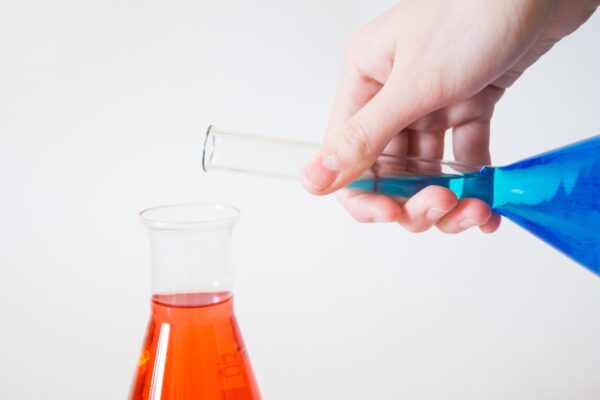Monitoring Your Heart 24/7: The Power of ABPM and Pulse Rate Monitors
Unlock the secrets of your heart’s health with ABPM and pulse rate monitors: Discover how to safeguard your well-being!
 Image courtesy of fauxels via Pexels
Image courtesy of fauxels via Pexels
Introduction:
Monitoring your blood pressure and pulse rate is crucial for maintaining good cardiovascular health. Traditionally, blood pressure and pulse rate are monitored through manual readings or using home monitoring devices. However, these methods have limitations, such as limited accuracy, inconsistency, and an inability to capture variations throughout the day. In this blog post, we will explore the benefits of using a 24-hour ABPM (Ambulatory Blood Pressure Monitoring) device to track your blood pressure and pulse rate continuously throughout the day and night.
Understanding Blood Pressure and Pulse Rate
Blood pressure and pulse rate are essential indicators of cardiovascular health. Blood pressure refers to the force exerted by blood against the walls of the arteries as the heart pumps it. Pulse rate, on the other hand, measures the number of times the heart beats per minute.
Stay Informed, Stay Healthy: Subscribe to Our Newsletter!
Unlock invaluable insights on ABPM and Pulse Rate Monitors, delivered straight to your inbox.
Maintaining appropriate levels of blood pressure and pulse rate is crucial for overall well-being. Normal ranges may vary depending on age, but consistently high blood pressure and abnormal pulse rates can lead to serious health issues, including heart disease, stroke, and organ damage.
Traditional Blood Pressure and Pulse Rate Monitoring
Traditionally, blood pressure and pulse rate are measured through manual readings or using home monitoring devices. However, these methods have their limitations.
Manual readings taken at healthcare facilities may be affected by “white coat hypertension,” where anxiety or stress from the medical environment causes blood pressure to temporarily increase, leading to inaccurate readings. Home monitoring devices, although convenient, often provide single or infrequent readings which do not capture the full picture of blood pressure variations throughout the day.
Additionally, these traditional methods may lack accuracy, inconsistency, and limited data. Tracking blood pressure and pulse rate continuously is essential to identify trends and potential risks.
The Advantages of 24-Hour ABPM Devices
24-hour ABPM devices offer numerous advantages compared to traditional monitoring methods. These devices provide continuous monitoring, collecting multiple readings throughout the day and night, resulting in more accurate assessment of blood pressure and pulse rate.
 Image courtesy of mytracky.com via Google Images
Image courtesy of mytracky.com via Google Images
One significant benefit of wearing a 24-hour ABPM device is the ability to identify “white coat hypertension.” By monitoring blood pressure in various settings and activities, it becomes possible to differentiate between temporary spikes caused by anxiety at healthcare facilities and the actual underlying blood pressure levels.
A 24-hour ABPM device also helps to detect “masked hypertension” that may be missed by traditional methods. Masked hypertension refers to individuals who have normal blood pressure readings during clinical visits but experience high blood pressure at other times. Identifying masked hypertension is crucial for preventive measures and early intervention to mitigate potential risks.
Another advantage of ABPM devices is their ability to capture nighttime variations in blood pressure and pulse rate. These variations can be crucial in identifying nocturnal hypertension, a condition where blood pressure remains elevated during sleep. Identifying and addressing nocturnal hypertension is important to prevent long-term health complications.
How to Use a 24-Hour ABPM Device
Using a 24-hour ABPM device is a straightforward process. Here are some general guidelines:
- Consult with your healthcare professional to determine if a 24-hour ABPM device is suitable for you.
- Ensure proper placement of the device on your arm according to the manufacturer’s instructions.
- Wear the device for a full 24-hour period, avoiding any activities that may interfere with the accuracy of the readings.
- During the monitoring period, continue with your daily routine, making a note of any physical activities, stressors, or symptoms experienced.
- Avoid water contact to prevent damage to the device.
- After the monitoring period, return the device to your healthcare professional for data analysis and interpretation.
It is important to follow your healthcare professional’s instructions and seek guidance for accurate interpretation of the recorded data.
Stay Informed, Stay Healthy: Subscribe to Our Newsletter!
Unlock invaluable insights on ABPM and Pulse Rate Monitors, delivered straight to your inbox.
Conclusion
Monitoring your blood pressure and pulse rate is crucial for maintaining good cardiovascular health. The limitations of traditional monitoring methods make 24-hour ABPM devices an excellent alternative. By continuously tracking your blood pressure and pulse rate throughout the day and night, these devices provide more accurate and comprehensive data. This enables the identification of white coat hypertension, detection of masked hypertension, and capturing nighttime variations that could be missed by traditional methods.
Prioritizing cardiovascular health by using a 24-hour ABPM device can lead to early detection and prevention of cardiovascular diseases. Therefore, consider consulting your healthcare professional about incorporating this powerful monitoring tool into your healthcare routine to ensure better control and management of your heart health.





